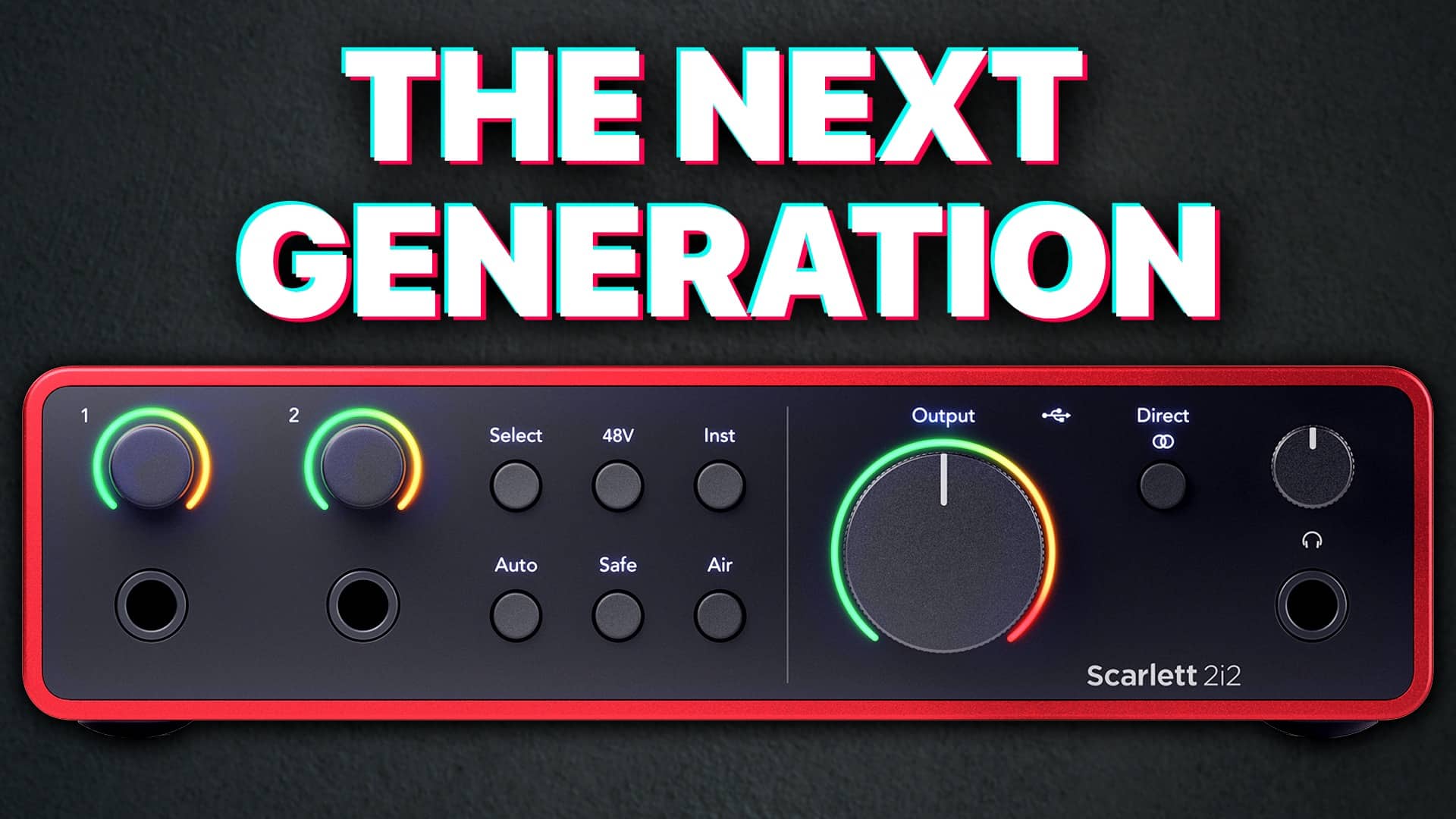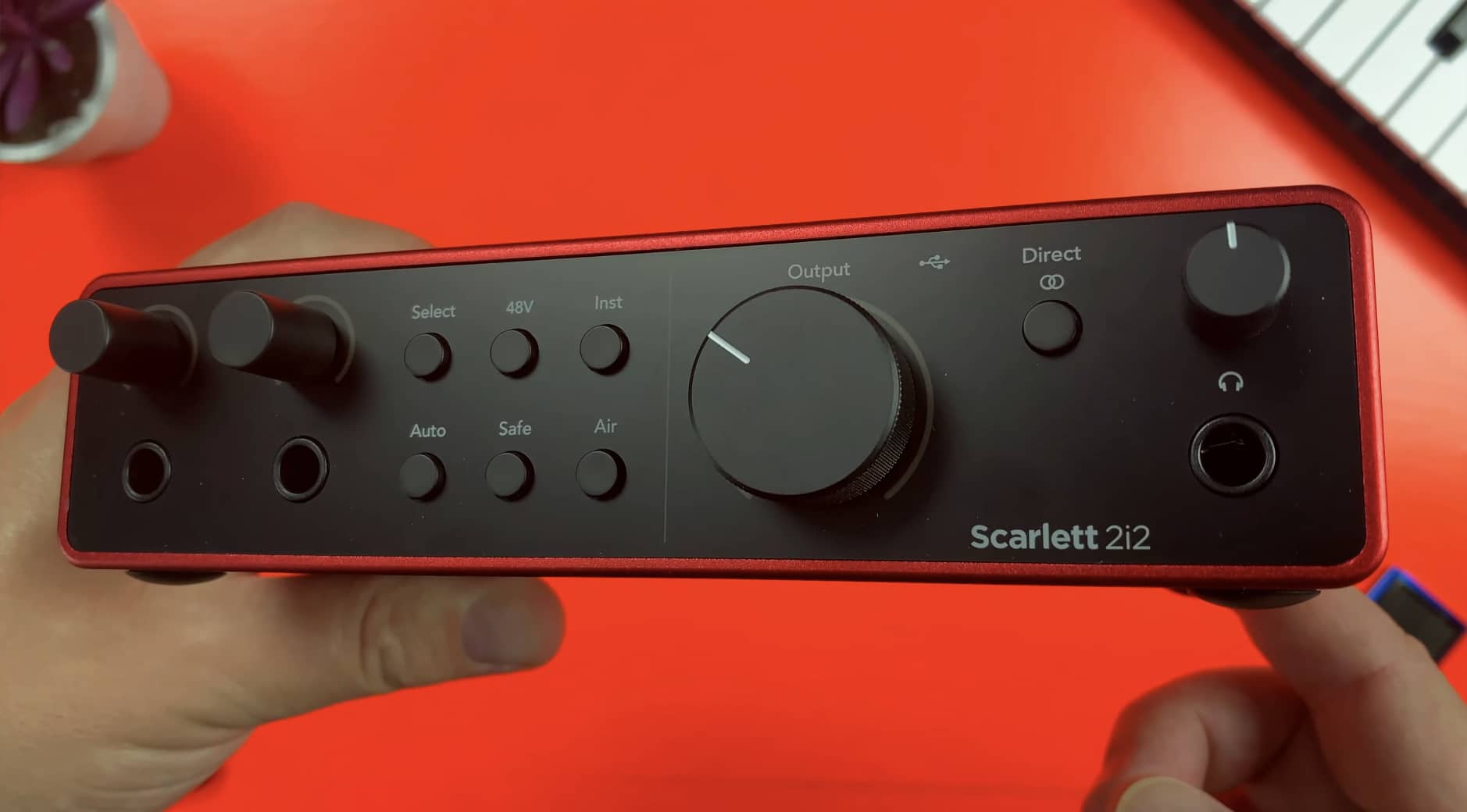
Focusrite have broken with convention for the 4th generation of their hugely popular Scarlett 2i2 audio interface.
Not only have they completely revamped iconic fan favourite features, they’ve also seemingly incorporated every unique selling point of every OTHER popular audio interface released over the last few years into this new model.
The result? One of the best audio interfaces you’ll ever use.
What’s the first thing that pops into your head when you think of an audio interface?
Chances are what you’re thinking of is rectangular, red and has the word ‘Focusrite’ emblazoned across the top of it.
Since their introduction way back in 2011, Focusrite’s Scarlett range of interfaces has remained one of the most popular option for musicians, producers and beatmakers looking for great quality recordings at an affordable price.
But the budget audio interface market has changed a lot in recent years with other companies releasing really compelling interfaces with unique features and selling points.
Well, Focusrite have responded with the 4th generation of their Scarlett range. And what a response it is!
Keeping it in the Family
I’ve had and used a Scarlett interface from every generation Focusrite have released. From the 1st generation Scarlett 2i2, to the 3rd generation Scarlett Solo, I understand what these interfaces are so popular. Great build quality, fantastic preamps and properly useful quality of life stuff, like the iconic gain halos around the input knobs.
Each newer Scarlett model has built upon the previous, for example the 3rd generation models added USB-C, updated the buttons and switches and added ‘AIR MODE’ for optional extra high end detail.
They made minor aesthetic changes and stuck with the classic look and feel that makes Focusrite Scarlett one of the industry’s most recognizable audio interface brands.
The 4th generation Scarlett 2i2 definitely feels like a bigger leap forward.
What’s New?
In the Focusrite Scarlett 2i2 4th Generation’s’s box you will find the interface itself, wrapped in a fully compostable bag. There’s also a USB-C to USB-A cable and some documentation.
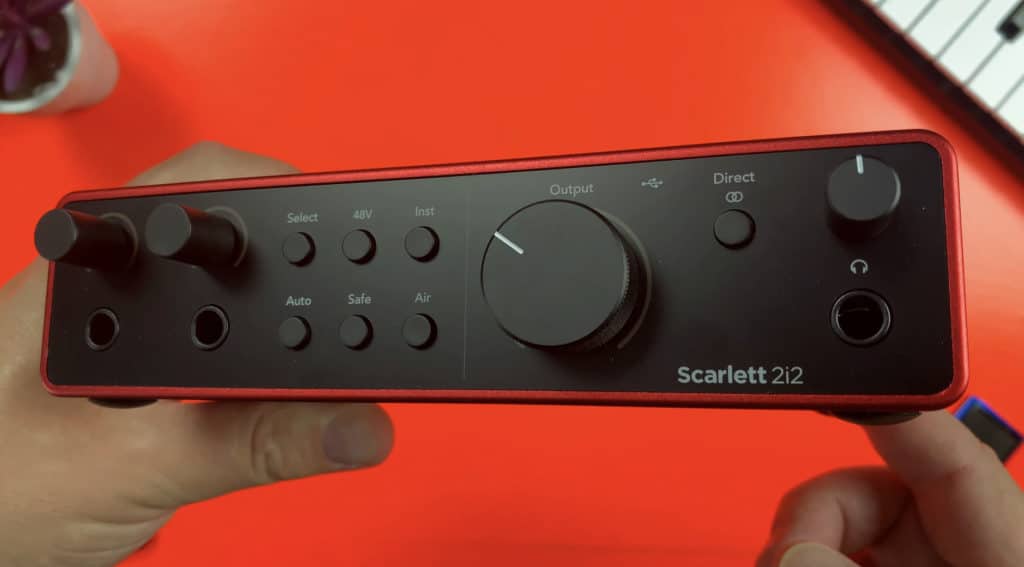
The interface has the instantly recognisable brushed metal body finished in red of course. It has quite a bit of heft to it and feels really sturdy. This time around, the front and back panels of the Scarlett have a matte black finish which in my opinion is infinitely better than the glossy, fingerprint magnet finishes found on the 3rd generation models.
On the front of the interface are two high headroom instrument inputs, and two input knobs. You’re probably wondering where the XLR inputs are. Historically the Scarlett 2i2 has featured combo inputs on the front of the interface. You’ll find two dedicated XLR inputs on the back of the 4th generation Scarlett 2i2.
Back on the front of the interface, there are two input knobs above the line inputs which feature updated Dynamic Gain Halos.
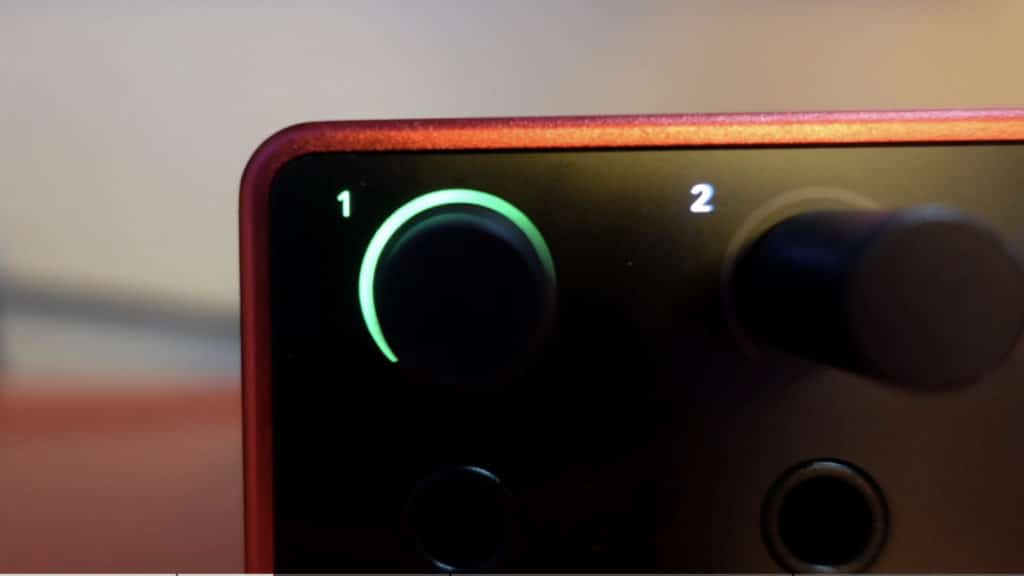
The Scarlett 4th Gen’s halos fill up to show the level of the incoming signal, this shows green or orange like a standard audio meter to clearly show varying input levels.
The whole halo lights up red if the input signal clips. Also, the halos on the 2i2 and 4i4 models fill up to show the level the preamp is set to when the gain knob is turned, which is a nice touch.
Next are six buttons. On the top row is a select button, which allows you to select between the two inputs, a 48V Phantom Power button for when you want to attach a condenser microphone to one of the Scarlett’s XLR inputs. There’s also an instrument button that you’ll want to switch on if you’re hooking up a guitar and switch off if you’re connecting a line level source like a keyboard to one of the interface’s instrument inputs.
On the bottom row you’ll find Autogain, Clip Safe and Air buttons that control all of the swanky new features Focusrite have added to these new models. I’ll go into all of those in more depth a wee bit later on.
Next is a big old output knob which controls output to the balanced TRS outputs on the back of the interface. There’s a USB LED that lights up when the intrface is connected and a direct monitoring button. When activated this allows you to monitor your signal from the interface itself with zero latency in either mono or stereo. Finally, there is a 1/4” 50Ω headphone jack with a dedicated volume knob on the end.
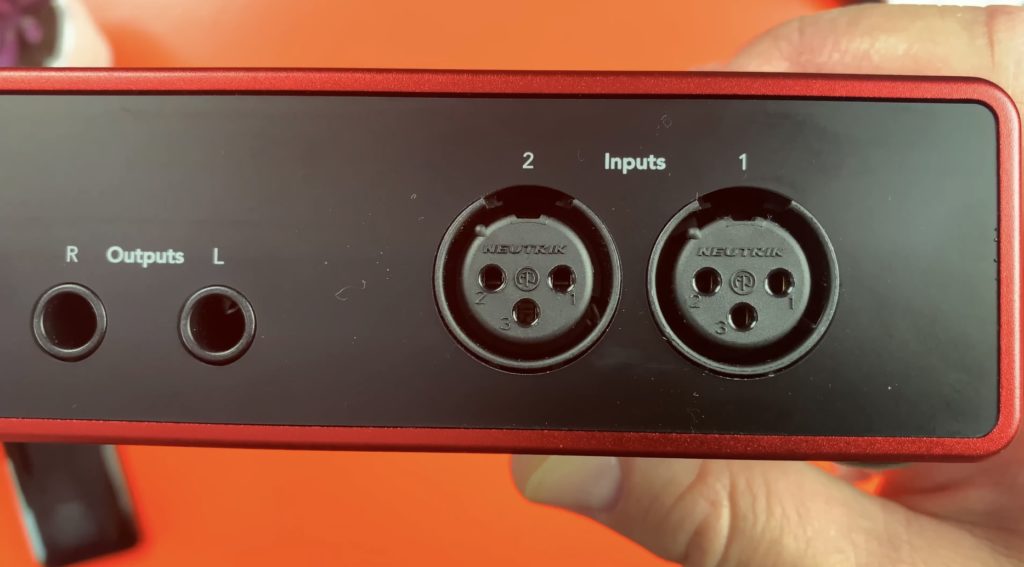
On the back of the Scarlett 2i2, You’ll find a Kensington lock, a very handy External 5V DC USB-C power (anyone with a lightning based iPad or iPhone will love that as it eliminates the need for a powered USB hub) and a regular USB-C output for connecting to your Mac or iOS device. There are two 1/4 TRS inputs that you can connect your studio monitors to and as I mentioned previously, two XLR inputs on the end.
All New Features
As I mentioned, the 4th gen Scarlett 2i2’s build quality is fantastic. All the knobs, buttons and inputs are solid as a rock and there is barely a wiggle or wobble to be found anywhere.
Let’s talk about the new features Focusrite have added to their 4th generation Scarlett 2i2 then.
Auto Gain
First up is the incredibly beginner friendly Auto Gain feature. Simply select the input, Hit the Auto button then play or sing for 10 seconds into an attached instrument or microphone. The Scarlett will then automatically set the optimum gain level for you.
It is that simple and the results are pretty much bang on. This isn’t a feature you often see in entry level audio interfaces and it will be really really useful to both those just starting out who maybe struggle with gain staging.
Clip Safe
Focusrite say that with Clip safe active, it will check your levels up to 96,000 times a second annd will automatically tweak the gain if your signal clips. Which is quite the bold claim. I practice, Clip Safe works exactly as advertised – even dropping the gain down to a sensible level while I screamed point blank into an attached microphone. Very impressive. (See the video embedded at the top of this article for a demo.)
Air
What’s also impressive is the overhaul Focusrite have given Air mode. The new updated Air mode air features two distinct stages:
An all-analogue presence section, introduces a filter circuit that delivers the sonic character of the original Focusrite recording console.
A DSP-based harmonic drive section, adds rich harmonics to recordings, and replicates the sound of driving a classic studio console.
Two presets will be available at launch:
- Presence
- Presence + Drive
You acess these by pressing selecting an input, hitting the Air button once for the presence preset and then hitting it again for the presence and drive preset.
Loopback
Loopback has also made it’s way onto the budget end of the Scarlett range which is definitely a welcome addition.
For the uninitiated, Loopback allows computer audio to be recorded into a DAW, by ‘looping back’ audio outputs from the computer, to virtual input channels within the interface.
Loopback can be used to create a mix of any audio sources on your Scarlett, whether that be instruments connected to the preamps or audio from your computer. You can easily mix instruments and backing tracks for your online concert, or perfectly balance your microphone and game audio for your livestream.
In terms of included software not a huge amount has changed really from the previous generation. Desktop users get access to lite versions of Ableton and Pro Tools, plus you can grab free plugins from Antares, Softube, Addictive drums the Focusrite plugin suite.
iOS users get… nothing.
It is worth mentioning though that the Focusrite Scarlett range is fully compatible with any iOS device and if you have a Lightning based iPad or iPhone and would usually need to use a powered USB hub to use an audio interface, you’ll find the fact that the scarlett can be powered externally really useful.
A Big Leap Forward
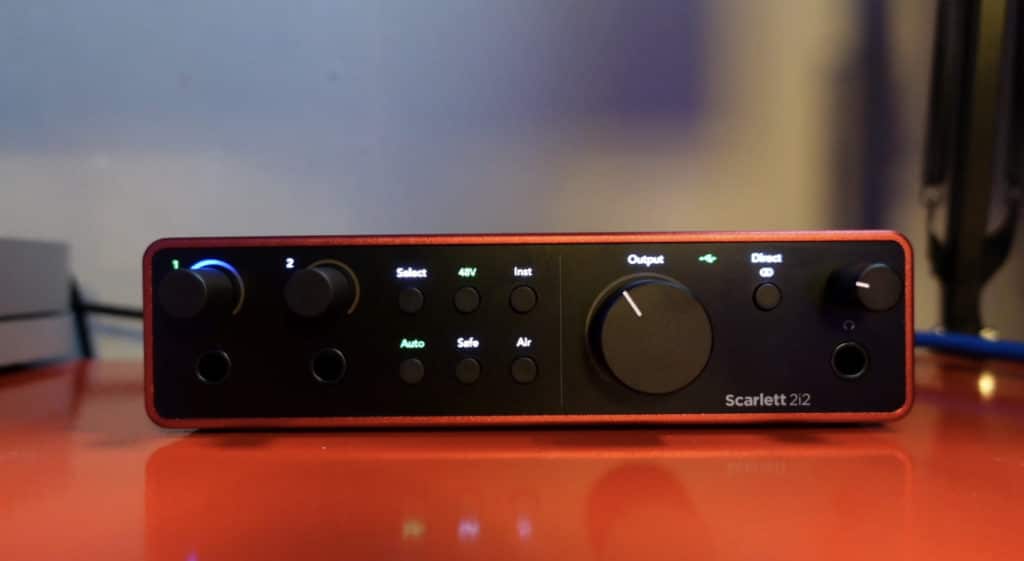
As I mentioned at the start of this review, the world of affordable audio interfaces has changed a lot since Focusrite released the third generation of their Scarlett range back in 2019.
To the point where they, while great sporting great bulid and sound quality felt a little… boring when compared to some of the more recent offerings from other companies.
This Focusrite Scarlett 2i2 4th Generation is very, very good. It brings together so many of the features that made other interfaces so appealing, like Auto gain, Loopback, external power and vintage modes. Focusrite have wisely done this while tastefully updating and refining the existing things that makes their brand so recognisable like the gain halos and superb audio quality.
It rockets up to the top of the list of interfaces I’d personally recommend to beginners looking for their first audio interface or more experienced musicians and producers looking for a portable solution that provides “pro” sound.
It is, in short an absolute banger.

